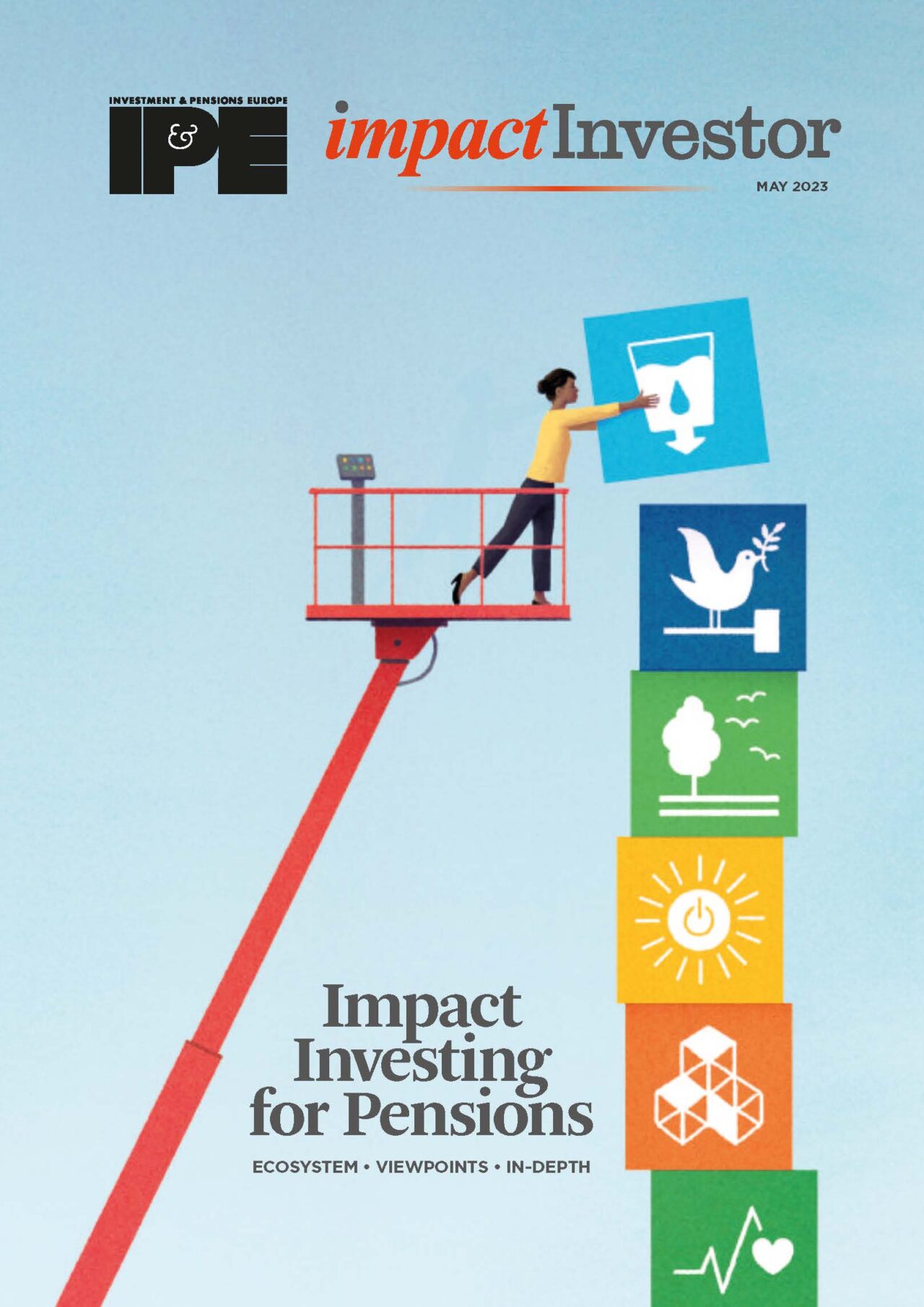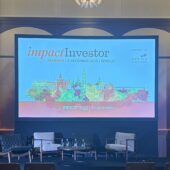Private debt investments in emerging markets are still considered high risk by some institutional investors, but blended finance solutions and other structures are attracting the interest of some of Europe’s largest pension funds.

Private debt investments in emerging markets are still considered high risk by some institutional investors, but blended finance solutions and other structures are attracting the interest of some of Europe’s largest pension funds
European private debt funds are a growing force when it comes to impact investing in emerging markets (EM).
However, there is a massive financing gap in terms of the amount of money that needs to be deployed in emerging markets to achieve the UN’s Sustainable Development Goals (SDGs). There are also multifarious opportunities where the investment case is clear.
According to the Phenix Capital Impact Database, of the 2,050-plus funds listed, €43bn has been committed to 319 private debt funds since 2015. What’s more, it is these private debt funds that have tended to target more emerging markets (69%) than developed markets (26%), with around 5% in global markets.
As a result, private debt is a highly sought-after asset class for impact fund managers, with financial inclusion being the leading impact theme.
The question now, given the 17 different SDGs, is how to mobilise institutional investors – European pension funds with plenty of dry powder – to increase their exposure to private debt investments in EM.
Risk perception
One of the challenges is that private debt investments in emerging markets are still considered high risk by some institutional investors, but blended finance solutions (government and private) and other structures that involve investing alongside multilateral development banks (MDBs), for example, are attracting the interest of some of Europe’s largest pension funds – which should give comfort for others to follow.
As Manfred Schepers, CEO and founder of ILX Management, says: “The case for investing in emerging markets is clear in terms of achieving results, because the emerging markets are clearly a priority, from an impact standpoint.”

To ensure reliable returns, ILX invests in syndicated loans originated and structured by MDBs and development finance institutions (DFIs) to provide long-term finance to projects and companies across core sustainability sectors including infrastructure, renewable energy, agribusiness and inclusive finance.
In January 2022, ILX launched the SDG-focused private credit fund, ILX Fund I, after receiving backing from German bank KfW, the Dutch Ministry of Foreign Affairs, and the UK Foreign Commonwealth and Development Office.
The fund also attracted interest from Europe’s largest pensions provider APG, which committed a total of $750m on behalf of pension fund clients ABP and bpfBOUW in January last year. Months later, the fund surpassed its $1bn fundraising target after securing a $300m investment from Pensioenfonds Vervoer, the Dutch pension fund for private transport workers.
Critical asset class
Schepers is confident that other European pension funds are interested in investing in emerging markets, not least because the loans on offer from the development banks are looking attractive in today’s volatile markets.
He says: “Sometimes the [development] banks’ rates are lower, sometimes they’re higher than alternatives, but they’re very stable. So, if you have a stable credit margin environment in these loans, and you have a floating rate of interest, then the value of these assets doesn’t change.”
Although impact investing in emerging markets is an emerging asset class in its own right, Schepers believes more European pension funds will want to increase their allocation to the asset class.
He says: “I think it will take time, but I think it will happen just because the emerging markets are such a critical asset class to them. And if you can do it in a way where you have the proper safeguarding and you can get decent risk returns, then it’s a good asset class to invest in.”
The fact that the European pension funds are significantly under-invested in emerging market debt, will likely also drive a shift towards EM impact investing.
Schepers says: “It’s a region of the world that is, over the long run, going to grow faster than the developed markets. But an issue you can’t avoid in emerging markets is that their capital markets are not functional. Despite this, I think we will see a level of increased allocation towards emerging markets.”
Financial inclusion
BlueOrchard, part of Schroders, has a large emerging markets private debt platform called the BlueOrchard Micro-finance Fund, as well as various blended finance impact funds. Over the past two decades, the firm has been successful in delivering stable, competitive returns that are unaffected by market swings.

BlueOrchard CEO Philipp Mueller says the main objective of the debt fund is financial inclusion, one of the UN’s SDGs. He explains: “The idea is to really enable people to access financial services. If you don’t have a passport, or you don’t have a utility bill, it’s really difficult to get access to the financial system. And this is one of the most important levers you have to help people alleviate themselves from poverty.”
He agrees with Schepers that there are many reasons for European pension funds to increase their allocations into impact investing in EM.
Mueller says: “We call emerging markets growth markets because they have a lot of growth dynamics, such as growing populations and higher GDP growth. Yet these markets are underserved in terms of access to capital and intent from an impact perspective.
“Yet there are so many things that you can support, by providing finance, that are achieving a great purpose in terms of environmental or social projects. So that’s the case for impact investing in emerging markets: you can achieve more impact per dollar or pound invested.
“Also, many of these markets are maturing and they’re accelerating in terms of digitisation, and that’s something which happens really, really fast. This is a huge opportunity for investors who are looking to invest in these markets.”
In addition to digitisation and financial inclusion projects, Mueller believes there is a big need for sustainable infrastructure.
He says: “There is a real need to finance essential infrastructure in growth markets, and to finance it in a sustainable way from the start, targeting sustainable energy generation and sustainable transport. We see a great opportunity in the mid-size transaction segments – opportunities which are too large to be locally financed but too small for the really large investor or government investments.”
Infrastructure debt financing
One of BlueOrchard’s infrastructure funds is investing up to $8m in ChargeZone, one of the fastest-growing EV charging companies in India.
The funding arranged by Blue-Orchard will support the company’s growth and finance an immediate roll-out of 286 charging stations serving 1,130 e-buses, avoiding emissions from internal combustion engines of diesel and petrol vehicles of 5.351 tonnes a year. Over the long term, the project will contribute directly and indirectly to the creation of at least 500 jobs.
Legal & General’s alternative asset platform recently backed a women-led emerging-market infrastructure company. Legal & General Capital invested an undisclosed sum to become a “significant minority shareholder” in ImpactA Global, an investment it said will help support the impact investment advisory firm’s strategy to deploy capital into sustainable infrastructure projects.
ImpactA, was founded by ex-JP Morgan directors Isabella da Costa Mendes and Victoria Miles, who serve as co-CEOs. Miles says that ImpactA will provide debt financing for infrastructure projects in emerging markets, and she firmly believes that closing the infrastructure gap is key to maintaining economic growth and reducing income inequality and, as such, is a multiplier for positive impact in the Global South.
She says: “Historically the institutional investor market has not been well set up to provide debt financing for many of these projects, notwithstanding the well-demonstrated resilience of infrastructure debt in emerging markets. This is an opportunity that we feel has been overlooked by market participants and one that, with the support of Legal & General Capital as a strategic partner, we are seeking to address.”
While it is clear that impact investing in emerging markets is beginning to attract broader interest, one issue that has to be addressed is how to measure success.
Stephen Liberatore, head of ESG at Nuveen, says: “We do impact reporting by engaging with our issuers upfront before we invest in a transaction. We obtain a commitment from them that they will provide relevant impact reporting either themselves, or a relevant third party that has access to the credible data. We then aggregate that into our reporting to our investors.”
Theo Brouwers, head of impact investing at Cardano Group-owned ACTIAM, believes there is a need for a more standardised form of reporting the impact and returns that are achievable through impact investing in EMs.
He says: “Impact measurement is a specific topic which is very important in the impact investing space and is developing very fast. We are continuously improving our impact framework, and making sure that we are involved in a lot of working groups across the globe across all our competitors. This is because we need to work on a standardised harmonised model.”
A move to standardise the measurement of success for impact investments would make the asset class easier to understand. However, given the range of opportunities and the potential for stable, reliable returns that have already been demonstrated mean European debt funds yet to invest in EMs have plenty of success stories to follow.
This article is part of the editorial content of the Impact Investing for Pensions report. You can download a digital copy of the report here.







